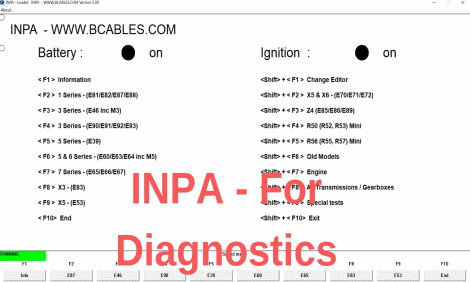

- #USING NAVCODER WITH WINDWOS 7 INSTALL#
- #USING NAVCODER WITH WINDWOS 7 MANUAL#
- #USING NAVCODER WITH WINDWOS 7 WINDOWS 10#
- #USING NAVCODER WITH WINDWOS 7 PASSWORD#
- #USING NAVCODER WITH WINDWOS 7 PC#
Randomly generate the local administrator password and disable the account on all support platforms (recommended): OPTIONAL. Configure task sequence for use with Bitlocker: OPTIONAL. Partition and format the target computer before installing the operating system: YES. Image Index: Enterprise, Education or Professional. #USING NAVCODER WITH WINDWOS 7 INSTALL#
On the Install Windows page enter the following configuration:. (or any other Windows 10, version 1809 boot image) Task sequence name: Windows Autopilot for existing devices. On the Create Task Sequence Wizard enter the following details:. Select Install an existing image package and click Next. Staying within the Configuration Manager admin console navigate to \Software Library\Overview\Operating Systems\Task Sequences. Specify a UNC path containing the Windows Autopilot for existing devices JSON file and click OK.Ĭreate a Windows Autopilot for existing devices Task Sequence. This package contains source files: YES. Name: Windows Autopilot for existing devices Config. On the Create Package and Program Wizard enter the following details:. Navigate to \Software Library\Overview\Application Management\Packages in the Configuration Manager console. Create a package containing the Windows Autopilot for existing devices JSON file NOTE: Multiple JSON profile files can be used, but each must be named AutopilotConfigurationFile.json when applied to Windows for OOBE to follow the Windows Autopilot experience. Save this file as AutopilotConfigurationFile.json using ANSI encoding to a location suitable as a Configuration Manager package source. Now copy the highlighted profile and paste into a Notepad window. The configuration file can only contain one file so select the required profile, including the opening and closing bracket, as shown below. As you can see, each profile is encapsulated within parentheses. Get-AutopilotProfile | ConvertTo-AutopilotConfigurationJSON As these profiles are not usable for the Windows Autopilot for existing devices scenario, we must convert the profiles into the necessary JSON format using the following commands:. The next command will retrieve all the Windows Autopilot profiles associated with your Intune tenant. Now log into Intune with administrator credentials using the following command:. Accept any prompts to complete the module installations. Enter the following commands to install the necessary modules:. #USING NAVCODER WITH WINDWOS 7 PC#
On an Internet-connected Windows PC or Server open an administrative PowerShell command window. Configure a Windows Autopilot for existing devices task sequence in Configuration Manager.Ĭreate the Windows Autopilot for existing devices JSON file. Convert the profile to the correct configuration file format. Retrieve a Windows Autopilot profile from Microsoft Intune. In this post, I will take you through the steps to: #USING NAVCODER WITH WINDWOS 7 WINDOWS 10#
You can test this scenario now using Configuration Manager 1806 or later and Windows 10 Insider Preview Build 17758 or later. Windows Autopilot for existing devices allows you to reimage and provision a Windows 7 device for Windows Autopilot user-driven mode using a single System Center Configuration Manager (current branch) task sequence. To address this, at Microsoft Ignite 2018, we announced Windows Autopilot for existing devices and other capabilities.
#USING NAVCODER WITH WINDWOS 7 MANUAL#
This led to many people developing creative and often manual solutions to first reimage a device, then collect the hash to register the device with Windows Autopilot. Unfortunately, the hardware hash necessary to pre-register an existing device with Windows Autopilot did not exist on Windows 10 prior to Windows 10, version 1703. In the year since we announced Windows Autopilot, we have received feedback from many customers who have Windows 7 estates running on modern hardware and want to re-provision those devices with Windows 10 using the Windows Autopilot experience. For more information, see Adding devices to Windows Autopilot and the rest of our Windows Autopilot documentation.

It is also possible to register your existing Windows 10 devices with the Windows Autopilot service so that if a device ever needs to be reset, or re-provisioned to a new user, the device will go through the same experience as new devices. This profile defines the Out of Box Experience (OOBE) for that device. First, the OEM registers purchased devices with the Windows Autopilot service, so you can assign the necessary Windows Autopilot profile. This solution provides a way for organizations to ship fresh, untouched Windows 10 devices directly to the end user and define the provisioning flow the user goes through to get a secure, productive Windows 10 device.

Last year at Microsoft Ignite 2017, we announced Windows Autopilot.







 0 kommentar(er)
0 kommentar(er)
